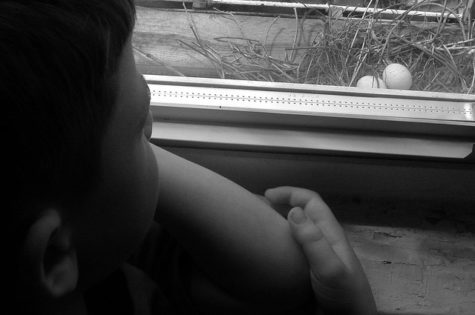 This weekend my oldest son held two brown eggs in his hand. He cradled them gently. Then he threw one on the ground. It bounced, and he laughed. This one was rubber. The other egg he held was a real one.
This weekend my oldest son held two brown eggs in his hand. He cradled them gently. Then he threw one on the ground. It bounced, and he laughed. This one was rubber. The other egg he held was a real one.
I’ve never gotten used to the fake egg. Sometimes it appears in egg cartons. Other times, it’s lonely in the corner of the room. But mostly, it gets thrown. It’s the most realistic I’ve ever seen, the perfect oval, the exact mix of brown and a bit of pink.
In real eggs, the shade of the shell comes from a mix of just two pigments, a blue-green and a brown-red. Birds can produce a rainbow of colors from this pair, whether robin’s blue or the brick red of a Cetti’s warbler. And it’s likely that this color appears quite close to the time an egg is released. There are many ideas about the reason behind different hue—it can be camouflage, a sign of health, a protection from UV light, a way of sneaking additional eggs into a surrogate parent’s nest.
The shape of eggs is something people have pondered, too. There are elegant ovals, jelly beans, ping-pong balls, and a range of forms in between. Last year, researchers reported on a program they’d developed to study egg dimensions—the Eggxtractor.
In the past, people had proposed multiple reasons for different egg shapes—could it be where they build their nests, or how many eggs they need to fit? But after looking at the egg shapes of 1,400 bird species, the researchers found that egg shape is related to flight. Birds that are known for their flight skills tend to lay eggs that their light-boned, streamlined bodies can accommodate—these eggs are longer and more elliptical. Birds that cover smaller distances, under lower power, tend to lay more rounded eggs. The researchers have said that if you give them an egg, they could make a good guess about how well the bird flies.
This sort of prediction reminds me of the things people used to say about the shape of my pregnant belly. It’s high, and sticking out like a submarine—must be a boy. It’s a girl, or else you wouldn’t be carrying so low. I wouldn’t know you were pregnant from the back—boy. I’d know you were pregnant just looking at your face. I felt pulled in so many directions—I desperately wanted to know exactly what this person would be, and I also didn’t want anyone else to tell me.
There’s still so much we don’t know about the shape of an egg, and what’s inside it. It’s possible that increasing the elliptical shape of an egg was an evolutionary solution to allow for a larger embryo without increasing the width of the egg. There’s also more to learn about what it looks like—some birds have eggs with intricate patterns on the shell, others have brightly colored eggs that are billboards to a predator on their unprotected nests on the ground.
Even when we guess right, there’s always something else that we don’t account for to lead us to wherever we’re headed next. With my son, I’ve started trying to keep a poker face when he asks me to catch an egg. Tonight, when I asked him when his next step in trickery might be, he thought about it a moment. Then he said he might walk or run with his egg and pretend to trip.
A long time ago, the eggshell was a source of strength—it’s what gave reptiles the safety to reproduce on land. Still, when I think of one falling, I can’t help trying to reach for it. Those beautiful, fragile eggs.
*
Image by Retrofresh! via Flickr/Creative Commons [I was having trouble uploading a new image, so I poached this–ha ha — from another post I wrote about eggs.]
One thought on “Egg Drop”
Comments are closed.